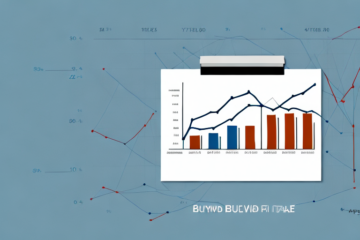Understanding the 10-Q SEC Form: A Guide to Common Finance Terms
If you are a shareholder or investor, it is important to understand the 10-Q SEC form. This document, filed quarterly by public companies in the United States, provides important information about a company’s financial performance, risks, and opportunities. In this comprehensive guide, we will explain what the 10-Q SEC form is, why it is important, and provide an overview of its key components. We will also examine common finance terms used in the 10-Q SEC form and explain how to read and interpret financial statements and ratios. Finally, we will discuss the role of the 10-Q in corporate disclosure, regulatory compliance requirements, best practices for preparing and filing a 10-Q, and the future of this form.
What is the 10-Q SEC Form and Why is it Important?
The 10-Q SEC form is a quarterly report filed by public companies with the Securities and Exchange Commission (SEC). It provides important information about a company’s financial performance, risks, and opportunities. The filing includes unaudited financial statements, management discussion and analysis, updates on legal proceedings, risk factors, and more. The 10-Q SEC form is important because it provides transparency into a company’s financial health, which is critical for investors and shareholders in making informed decisions.
One of the key benefits of the 10-Q SEC form is that it allows investors to track a company’s performance over time. By comparing the information in the current 10-Q filing to previous filings, investors can gain insights into a company’s financial trends and identify potential risks or opportunities. This information can be particularly valuable for long-term investors who are looking to make informed decisions about their investments.
In addition to providing transparency for investors, the 10-Q SEC form also serves as a regulatory tool for the SEC. By requiring companies to file regular reports, the SEC can monitor and enforce compliance with securities laws and regulations. This helps to ensure that companies are operating fairly and transparently, which ultimately benefits investors and the broader financial system.
Key Components of the 10-Q SEC Form
The 10-Q SEC form has several key components, including financial statements, management’s discussion and analysis of financial condition and results of operations (MD&A), disclosures about risks and uncertainties, and updates on legal proceedings. Financial statements include the balance sheet, income statement, and statement of cash flows. The MD&A provides context for the financial statements and explains trends, risks, and opportunities. Risk factors include potential threats to a company’s business, such as economic conditions, competition, and regulatory changes. Legal proceedings may include lawsuits, investigations, or regulatory actions that could impact the company’s finances.
Another important component of the 10-Q SEC form is the section on executive compensation. This section provides information on the compensation packages of the company’s top executives, including salaries, bonuses, stock options, and other benefits. This information is important for investors and stakeholders to understand how the company is compensating its leadership and whether it aligns with the company’s performance and goals.
How to Read and Analyze Financial Statements in the 10-Q SEC Form
To read and analyze financial statements in the 10-Q SEC form, it is important to understand financial terms and ratios. Financial statements include the balance sheet, which provides a snapshot of a company’s assets, liabilities, and equity; the income statement, which shows revenue and expenses over a period of time; and the cash flow statement, which reports cash inflows and outflows. Ratios, such as the debt-to-equity ratio and the current ratio, provide insights into a company’s financial health and ability to meet its obligations. Interpreting financial statements and ratios can help investors and shareholders make informed decisions about a company’s stock or bond offerings.
Common Finance Terms Used in the 10-Q SEC Form Explained
The 10-Q SEC form contains many finance terms that may be unfamiliar to those without a financial background. Common terms include revenue, cost of goods sold, gross profit, net income, assets, liabilities, equity, cash flow, and dividends. Understanding these terms is critical for interpreting financial statements and ratios.
It is important to note that these terms may have different meanings depending on the industry or company. For example, revenue for a software company may include both product sales and subscription fees, while revenue for a retail company may only include product sales. It is important to read the footnotes and disclosures in the financial statements to fully understand how these terms are being used.
How to Interpret Financial Ratios in the 10-Q SEC Form
Interpreting financial ratios in the 10-Q SEC form is an important part of analyzing a company’s financial performance. Key ratios include the debt-to-equity ratio, which measures the amount of debt relative to equity; the current ratio, which measures a company’s ability to meet its short-term obligations; and the price-to-earnings ratio, which measures the price of a stock relative to its earnings. Analyzing these ratios can help investors and shareholders make informed decisions about a company’s financial health and prospects.
Another important financial ratio to consider is the return on equity (ROE) ratio, which measures a company’s profitability by showing how much profit it generates with the money shareholders have invested. A high ROE ratio indicates that a company is using its shareholders’ investments effectively to generate profits. On the other hand, a low ROE ratio may indicate that a company is not using its shareholders’ investments efficiently.
It is also important to consider the gross profit margin ratio, which measures the percentage of revenue that a company retains after deducting the cost of goods sold. A high gross profit margin ratio indicates that a company is generating a significant profit from its sales, while a low gross profit margin ratio may indicate that a company is struggling to generate profits from its sales.
The Role of the 10-Q SEC Form in Corporate Disclosure
The 10-Q SEC form plays a key role in corporate disclosure, as it provides important information about a company’s financial condition, risks, and opportunities. The SEC requires public companies to file quarterly and annual reports to ensure transparency and accountability. Investors and shareholders rely on these reports to assess a company’s financial performance and prospects, and to make informed investment decisions.
In addition to financial information, the 10-Q SEC form also requires companies to disclose any material changes or events that could impact their business operations or financial performance. This includes changes in management, legal proceedings, and mergers and acquisitions. By providing this information, the 10-Q form helps investors and shareholders stay informed about any potential risks or opportunities that could affect their investment in the company.
Understanding Regulatory Compliance Requirements for Filing a 10-Q SEC Form
To comply with SEC regulations, public companies must file a 10-Q SEC form within 45 days of the end of each quarter. The form must include unaudited financial statements, management’s discussion and analysis, and disclosures about risks and uncertainties. Failure to file a 10-Q SEC form on time can result in penalties and regulatory action.
It is important for companies to have a thorough understanding of the regulatory compliance requirements for filing a 10-Q SEC form. This includes ensuring that all financial statements are accurate and complete, and that all disclosures are made in accordance with SEC guidelines. Companies should also have a system in place to ensure that the form is filed on time, and that any necessary corrections or updates are made promptly.
In addition to the regulatory requirements, companies should also consider the potential impact of the 10-Q SEC form on their stakeholders. This includes investors, who may use the information in the form to make investment decisions, as well as employees, customers, and other stakeholders who may be affected by the company’s financial performance. By taking a proactive approach to regulatory compliance and stakeholder engagement, companies can help to build trust and confidence in their operations and financial reporting.
How to Use the Information in a 10-Q SEC Form to Make Investment Decisions
Understanding the information in a 10-Q SEC form can help investors and shareholders make informed decisions about a company’s stock or bond offerings. By analyzing financial statements, management discussion and analysis, and disclosures about risks and opportunities, investors can assess a company’s financial health, performance, and prospects. This information can be used to evaluate a company’s value and potential for growth, and to make informed investment decisions.
One important aspect to consider when analyzing a 10-Q SEC form is the company’s cash flow. Cash flow statements provide information about a company’s ability to generate cash and manage its expenses. Positive cash flow indicates that a company is generating more cash than it is spending, which can be a good sign for investors. However, negative cash flow may indicate that a company is struggling to manage its expenses or is investing heavily in growth opportunities. By analyzing a company’s cash flow statement, investors can gain insight into its financial stability and potential for future growth.
Best Practices for Preparing and Filing a 10-Q SEC Form
Preparing and filing a 10-Q SEC form requires careful attention to detail and compliance with SEC regulations. Best practices include developing a clear timeline for preparation and filing, ensuring accuracy and completeness of financial statements, and engaging legal and financial experts as needed. Prioritizing compliance and transparency can help companies avoid legal and financial risks.
Another important best practice for preparing and filing a 10-Q SEC form is to establish effective internal controls over financial reporting. This includes implementing policies and procedures to ensure the accuracy and reliability of financial information, as well as regularly reviewing and testing these controls to identify and address any weaknesses.
In addition, companies should also consider the potential impact of the 10-Q filing on their stakeholders, including investors, employees, and customers. Providing clear and concise disclosures in the form can help build trust and confidence among these groups, while also demonstrating a commitment to transparency and accountability.
Differences Between the 10-Q and Other SEC Forms
While the 10-Q SEC form focuses on quarterly financial reporting, there are other SEC forms that provide different types of information. The 10-K form is an annual report that provides a more comprehensive overview of a company’s financial performance, risks, and opportunities. The 8-K form is used to report significant events or changes that impact a company’s business, such as mergers, acquisitions, or executive changes. Understanding the differences between these forms is important for investors and shareholders to get a complete picture of a company’s financial health and prospects.
In addition to the 10-Q, 10-K, and 8-K forms, there are other SEC forms that companies may be required to file. For example, the Form 4 is used to report insider transactions, such as when a company’s executives or directors buy or sell shares of the company’s stock. The Form 13F is used to report institutional holdings of a company’s stock, which can provide insight into the sentiment of large investors.
It’s important to note that while these SEC forms provide valuable information, they should not be the only source of information used to make investment decisions. Investors should also consider other factors, such as a company’s industry trends, competitive landscape, and management team, before making any investment decisions.
Common Mistakes Companies Make When Filing a 10-Q
Companies can make a variety of mistakes when filing a 10-Q SEC form, including inaccurate or incomplete financial statements, failure to comply with SEC regulations, and lack of transparency about risks or opportunities. These mistakes can result in penalties, legal action, and damage to a company’s reputation. To avoid these mistakes, companies should prioritize accuracy and compliance, engage legal and financial experts as needed, and ensure transparency and clarity in disclosures.
Another common mistake that companies make when filing a 10-Q is not providing enough context or explanation for changes in financial performance. This can lead to confusion among investors and analysts, and may result in a negative impact on the company’s stock price. To avoid this mistake, companies should provide clear and detailed explanations for any significant changes in financial performance, including the underlying causes and any steps being taken to address them.
The Future of the 10-Q SEC Form: Changes and Updates Ahead
The 10-Q SEC form is a critical component of corporate transparency and accountability, but there are changes and updates ahead. The SEC is considering updates to financial reporting requirements and may shift to a semi-annual reporting cycle. In addition, technological innovations and advancements in data analytics may change the way information is reported and analyzed in the future. Investors and shareholders should stay up to date on changes to the 10-Q SEC form to ensure they have the information they need to make informed decisions.
One potential change to the 10-Q SEC form is the inclusion of environmental, social, and governance (ESG) information. This type of information is becoming increasingly important to investors who want to understand a company’s impact on the environment and society. The SEC is currently considering whether to require companies to disclose ESG information in their 10-Q filings. This change would provide investors with more comprehensive information about a company’s operations and could impact investment decisions.










